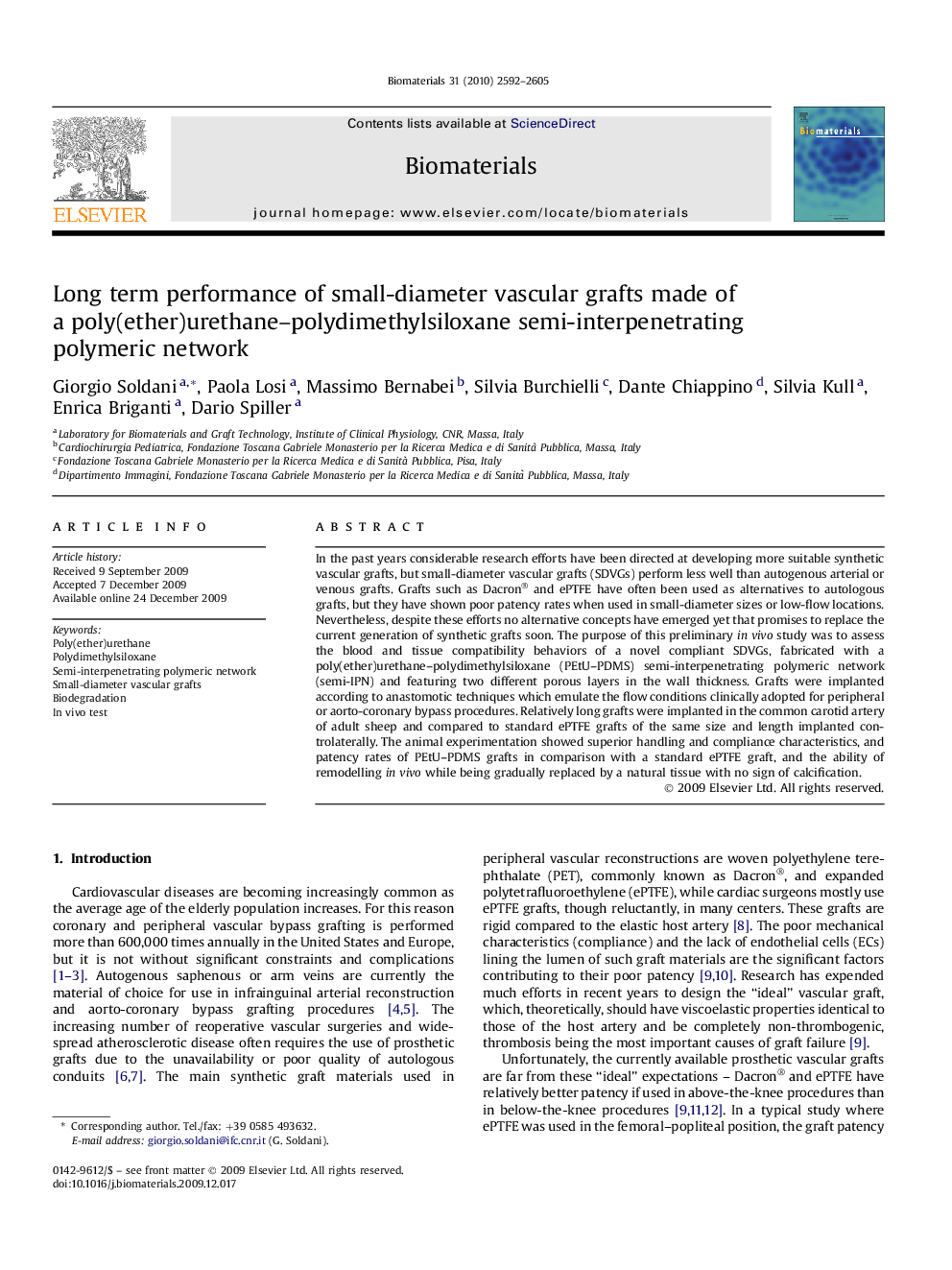| Article ID | Journal | Published Year | Pages | File Type |
|---|---|---|---|---|
| 8470 | Biomaterials | 2010 | 14 Pages |
In the past years considerable research efforts have been directed at developing more suitable synthetic vascular grafts, but small-diameter vascular grafts (SDVGs) perform less well than autogenous arterial or venous grafts. Grafts such as Dacron® and ePTFE have often been used as alternatives to autologous grafts, but they have shown poor patency rates when used in small-diameter sizes or low-flow locations. Nevertheless, despite these efforts no alternative concepts have emerged yet that promises to replace the current generation of synthetic grafts soon. The purpose of this preliminary in vivo study was to assess the blood and tissue compatibility behaviors of a novel compliant SDVGs, fabricated with a poly(ether)urethane–polydimethylsiloxane (PEtU–PDMS) semi-interpenetrating polymeric network (semi-IPN) and featuring two different porous layers in the wall thickness. Grafts were implanted according to anastomotic techniques which emulate the flow conditions clinically adopted for peripheral or aorto-coronary bypass procedures. Relatively long grafts were implanted in the common carotid artery of adult sheep and compared to standard ePTFE grafts of the same size and length implanted controlaterally. The animal experimentation showed superior handling and compliance characteristics, and patency rates of PEtU–PDMS grafts in comparison with a standard ePTFE graft, and the ability of remodelling in vivo while being gradually replaced by a natural tissue with no sign of calcification.
